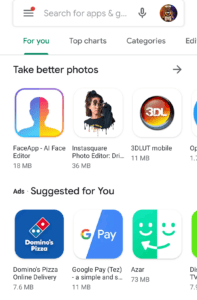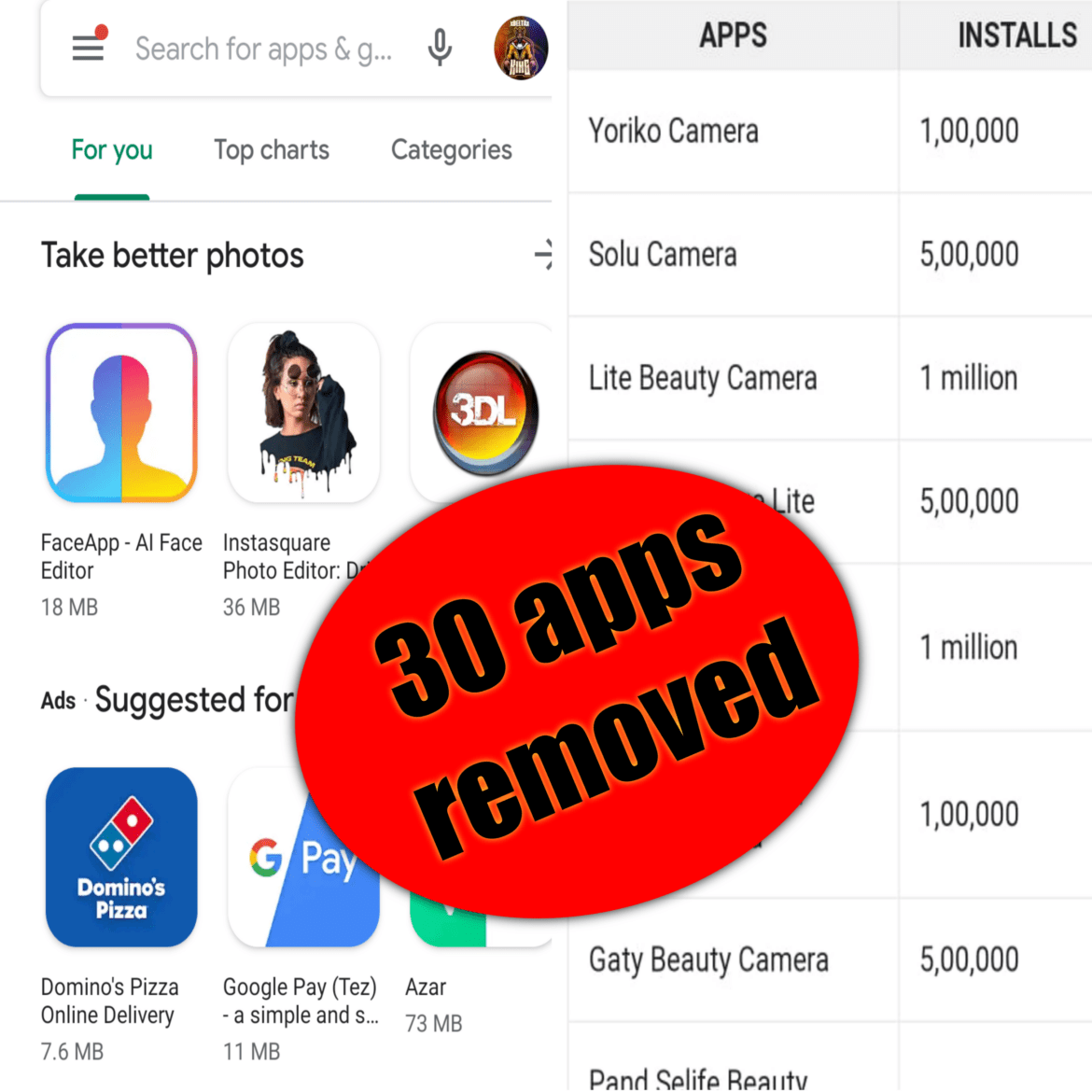Contents
Home News Google removed these 30 apps from Play Store, delete them from your…
Google removed these 30 apps from Play Store, delete them from your phone now!
These apps have the power to bombard users with unwanted ads
HIGHLIGHTS
The apps faraway from Google Play Store have already been downloaded a complete of 20 million times
These apps have reportedly been identified to render fraudulent advertising in users’ devices

Google has removed over 30 popular apps, including those that add beauty filters to your photos, from the Play Store after these were discovered to possess malicious malware. These apps won’t be available for download from the Play Store for brand spanking new users, but the 20 million users who have already downloaded them got to confirm they uninstall the apps from their phones to avoid security mishaps. Among the 30+ apps, it’s the third-party selfie apps that have found to be most fraudulent. As per security researchers WhiteOps, the apps have the power to bombard users with unwanted ads and redirect them to websites without ever clicking on a link. It should even be noted that in some cases, it had been nearly “impossible” for users to delete these apps once downloaded.

- Here are the apps, published by WhiteOps, that are far away from Google Play Store. If you have them installed, get rid of them as soon as possible.
The aforementioned apps have collectively amassed quite 20 million downloads. White Ops explained in its websites that these apps render fraudulent advertising in users’ devices. “What these apps all have in common – besides their fraudulent tactics – is their specialize in beauty. Most purport to be selfie apps that add beauty filters to users’ pictures, while at an equivalent time showing ads out of context and making it nearly impossible to remove the apps themselves.”
You should delete these apps from your phone
| APPS | INSTALLS |
| Yoriko Camera | 1,00,000 |
| Solu Camera | 5,00,000 |
| Lite Beauty Camera | 1 million |
| Beauty Collage Lite | 5,00,000 |
| Beauty and Filters camera | 1 million |
| Photo Collage and beauty camera | 1,00,000 |
| Gaty Beauty Camera | 5,00,000 |
| Pand Selfie Beauty Camera | 50,000 |
| Cartoon Photo Editor and Selfie Beauty Camera | 1 million |
| Bengbu Sealife Beauty Camera | 1 million |
| Pinot Sealife Beauty and Photo Editor | 1 million |
| Mood Photo Editor and Selfie Beauty Camera | 5,00,000 |
| Rose Photo Editor and Selfie Beauty Camera | 1 million |
| Selfie Beauty Camera and Photo Editor | 1,00,000 |
| Fog Selfie Beauty Camera | 1,00,000 |
| First Selfie Beauty Camera and Photo Editor | 5 million |
| Vanu Selfie Beauty Camera | 1,00,000 |
| Sun Pro Beauty Camera | 1 million |
| Funny Sweet Beauty Camera | 5,00,000 |
| Little Bee Beauty Camera | 1 million |
| Beauty Camera and Photo Editor Pro | 1 million |
| Grass Beauty Camera | 1 million |
| All Beauty Camera | 1 million |
| Flower Beauty Camera | 1,00,000 |
| Best Selfie Beauty Camera | 1 million |
| Orange Camera | 5,00,000 |
| Sunny Beauty Camera | 1 million |
| Pro Selfie Beauty Camera | 5,00,000 |
| Selfie Beauty Camera Pro | 1 million |
| Elegant Beauty Cam-2019 | 50,000 |
In the time since that first app was published, the fraudsters published a replacement app every 11 days on the average. Notably, most of those apps were available for around 17 days each before they were pulled down. “But even with a mean of but three weeks of your time on the Play Store, the apps found an audience: the typical number of installs for the apps we analyzed was 565,833,” the research reads.

If you’re wondering how these apps avoid detection within the first place? Well, the White Ops paper notes that the majority of those apps use “packers” that are hidden within the APK within the sort of extra DEX files. “Historically, packing binaries may be a common technique malware developers use to avoid being detected by security software like antivirus. Packed files in Android aren’t new and can’t be assumed to be malicious, as some developers use packing to guard their property and check out to avoid piracy,” the research paper added.
Apart from this, the developers also use Arabic characters, reducing readability for people, in various places of the apps’ ASCII text file to avoid detection. “These numbers tell a story of a cat and mouse game, during which the Play Store hunts down the fraudster and keeps them in restraint by removing fraudulent apps as quickly as they’re discovered. The fraudster likely developed a more robust mechanism to avoid detection and removal. A batch of 15 apps, all published after September 2019, had a way slower removal rate using those.





